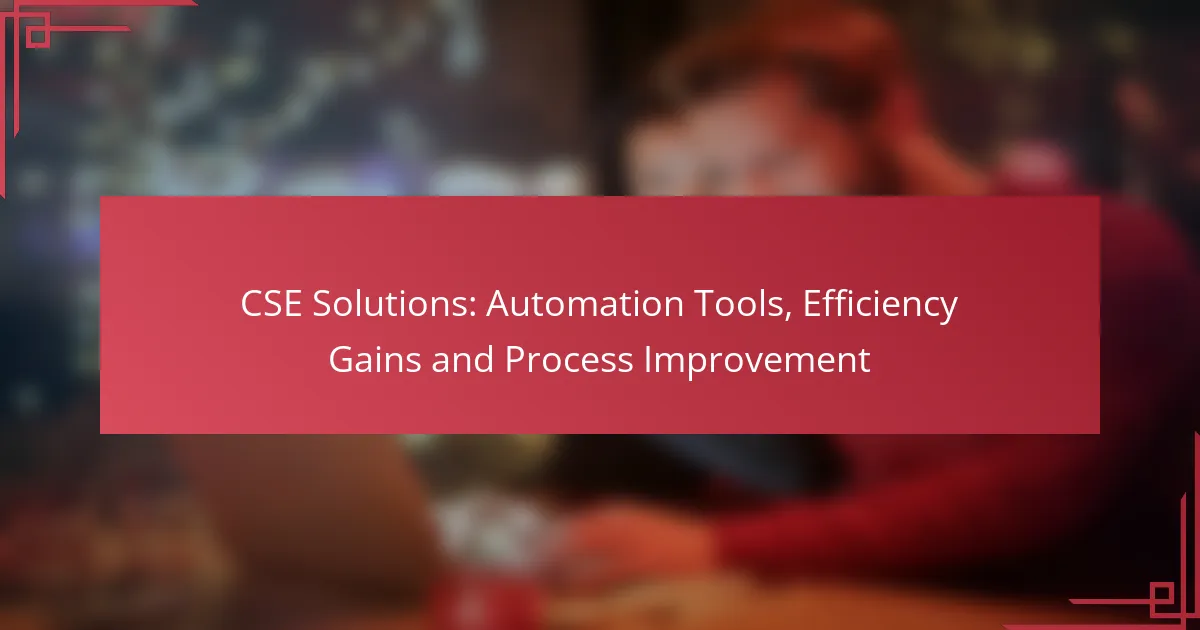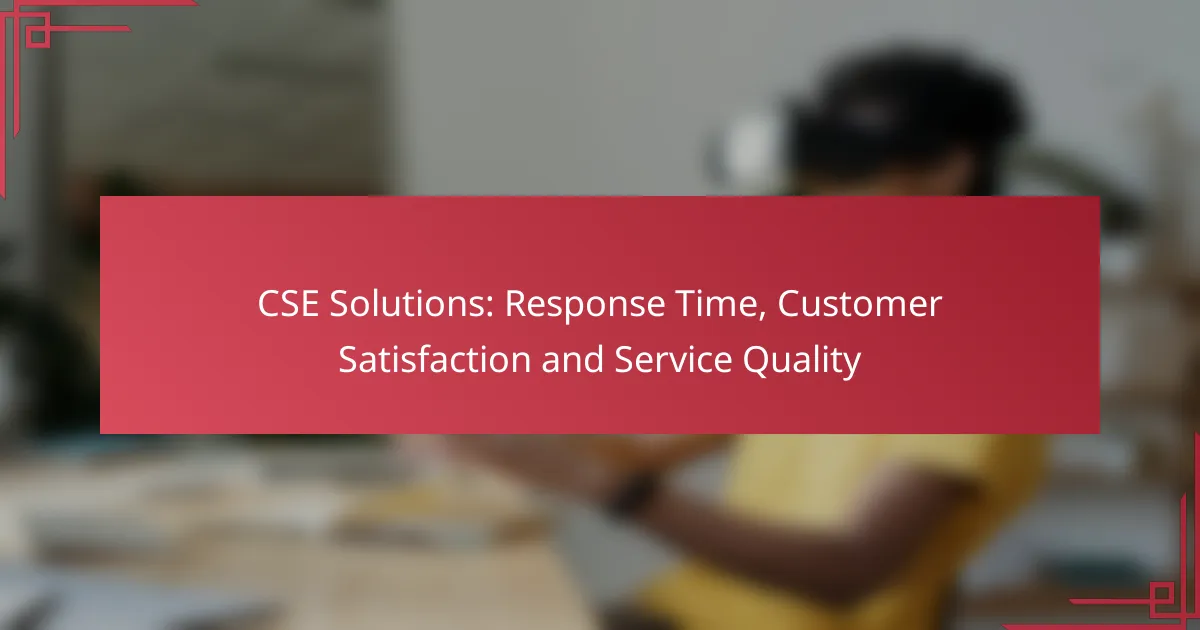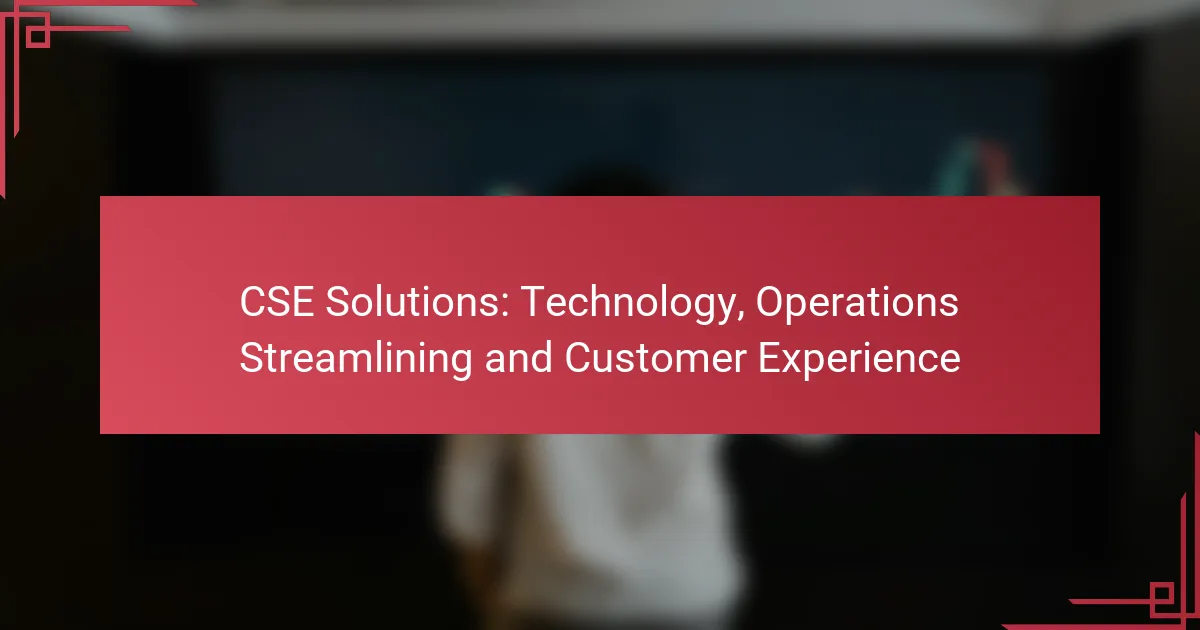Cost-effective CSE solutions are designed to maximize efficiency while minimizing expenses, particularly in the UK. By leveraging technology and outsourcing, these strategies enhance workflow efficiency, automate processes, and improve communication, leading to increased productivity and better resource management.

What are cost-effective CSE solutions in the UK?
Cost-effective CSE solutions in the UK focus on maximizing efficiency while minimizing expenses. These strategies often involve leveraging technology and outsourcing to streamline operations and reduce overhead costs.
Cloud-based resource management tools
Cloud-based resource management tools enable organizations to allocate and track resources efficiently. These platforms often come with features such as real-time data access, collaboration capabilities, and scalability, which can significantly lower operational costs.
Popular options include tools like Asana, Trello, and Microsoft Teams, which offer various pricing tiers. Many of these tools provide free versions or trials, allowing businesses to assess their suitability without upfront investment.
Automated workflow systems
Automated workflow systems help streamline repetitive tasks, reducing the time and labor required for manual processes. By implementing automation, companies can enhance productivity and minimize errors, leading to cost savings.
Examples include software like Zapier or Monday.com, which integrate various applications to automate tasks. Businesses should evaluate their workflows to identify areas where automation can provide the most benefit, focusing on high-volume, low-complexity tasks.
Outsourcing non-core functions
Outsourcing non-core functions allows companies to focus on their primary business activities while reducing costs associated with staffing and training. Commonly outsourced functions include IT support, customer service, and accounting.
When considering outsourcing, businesses should assess potential partners based on their expertise, reliability, and cost-effectiveness. Establishing clear communication and performance metrics is crucial to ensure that outsourced services meet company standards and expectations.

How can CSE solutions enhance workflow efficiency?
CSE solutions can significantly enhance workflow efficiency by automating processes, improving communication, and integrating various tools. These strategies help teams collaborate more effectively and streamline operations, ultimately leading to increased productivity and reduced costs.
Streamlined communication platforms
Streamlined communication platforms facilitate real-time interaction among team members, reducing delays and misunderstandings. Tools like Slack or Microsoft Teams allow for instant messaging, video calls, and file sharing, which can enhance collaboration.
When choosing a communication platform, consider factors such as user-friendliness, integration capabilities with other tools, and security features. Ensuring that all team members are trained to use these platforms effectively can prevent common pitfalls like miscommunication or information overload.
Integrated project management software
Integrated project management software centralizes project planning, task assignments, and progress tracking, making it easier for teams to stay organized. Tools like Asana or Trello enable users to visualize workflows, set deadlines, and allocate resources efficiently.
To maximize the benefits of project management software, ensure it aligns with your team’s specific needs and workflows. Regularly updating project statuses and encouraging team members to communicate within the platform can help maintain accountability and transparency.

What are the key benefits of CSE solutions?
CSE solutions offer significant advantages, including cost savings, enhanced workflow efficiency, and better resource management. These benefits can lead to improved overall performance and competitiveness in various industries.
Reduced operational costs
Implementing CSE solutions can lead to substantial reductions in operational costs by streamlining processes and minimizing waste. Organizations often experience savings in areas such as labor, materials, and overhead expenses.
For example, automating routine tasks can cut down on labor costs by allowing employees to focus on higher-value activities. Additionally, optimizing supply chains can reduce material costs by ensuring that resources are used more efficiently.
Improved resource allocation
CSE solutions enhance resource allocation by providing better visibility into resource usage and needs. This allows organizations to allocate their assets more effectively, ensuring that the right resources are available at the right time.
Utilizing data analytics can help identify underutilized resources, enabling companies to redistribute them where they are needed most. This proactive approach not only maximizes productivity but also minimizes the risk of resource shortages or excesses.

What criteria should be considered when selecting CSE solutions?
When selecting CSE solutions, it’s essential to evaluate factors such as scalability, integration capabilities, and overall cost-effectiveness. These criteria ensure that the chosen solution meets current needs while allowing for future growth and seamless operation within existing workflows.
Scalability of the solution
Scalability refers to the ability of a CSE solution to handle increasing amounts of work or to be readily enlarged. When assessing scalability, consider whether the solution can accommodate growing data volumes and user numbers without significant performance degradation. Look for solutions that can scale both vertically (adding resources to existing nodes) and horizontally (adding more nodes).
For example, a cloud-based CSE solution might offer flexible pricing tiers based on usage, allowing businesses to start small and expand as needed. This approach can help manage costs effectively while ensuring that the system can grow alongside the organization.
Integration capabilities with existing systems
Integration capabilities are crucial for ensuring that a new CSE solution works well with your current systems and processes. Evaluate how easily the solution can connect with existing software, databases, and tools. A solution that supports standard APIs or has pre-built connectors can significantly reduce implementation time and complexity.
For instance, if your organization uses specific CRM or ERP systems, check if the CSE solution can seamlessly integrate with them. This compatibility can enhance data flow and improve overall efficiency, minimizing disruptions during the transition to a new system.

How do CSE solutions impact resource management?
CSE solutions significantly enhance resource management by providing tools that optimize the allocation and utilization of resources. These solutions enable organizations to track, analyze, and adjust resource deployment effectively, leading to improved efficiency and cost savings.
Enhanced visibility of resource utilization
Enhanced visibility of resource utilization allows organizations to monitor how resources are being used in real-time. This transparency helps identify underutilized assets and areas where resources may be wasted, enabling more informed adjustments to be made.
For instance, a company using CSE solutions can visualize the usage of equipment and personnel across projects, leading to better scheduling and reduced idle time. This can result in savings of up to 30% in operational costs when resources are managed effectively.
Data-driven decision making
Data-driven decision making is a crucial aspect of CSE solutions, as they provide analytics that inform strategic choices regarding resource allocation. By analyzing historical and real-time data, organizations can make evidence-based decisions that align with their operational goals.
For example, a business can leverage data insights to forecast resource needs for upcoming projects, allowing for proactive adjustments rather than reactive measures. This approach minimizes disruptions and maximizes productivity, ultimately leading to better project outcomes and financial performance.

What are the common challenges in implementing CSE solutions?
Implementing CSE (Customer Service Excellence) solutions often faces several challenges that can hinder effectiveness. Key issues include resistance to change among staff and integration problems with existing legacy systems.
Resistance to change among staff
Resistance to change is a significant barrier when introducing CSE solutions. Employees may feel threatened by new processes or technologies, fearing job loss or increased workload. To mitigate this, organizations should involve staff in the planning stages and provide adequate training.
Communicating the benefits of CSE solutions can help alleviate fears. Highlighting how these changes can enhance job satisfaction and improve customer interactions can foster a more positive attitude towards the transition.
Integration issues with legacy systems
Integrating CSE solutions with legacy systems can be complex and time-consuming. Many organizations rely on outdated software that may not support modern CSE tools, leading to compatibility issues. Conducting a thorough assessment of existing systems before implementation is crucial.
Consider phased integration as a strategy to minimize disruptions. This approach allows for gradual adjustments and testing, ensuring that new solutions work effectively alongside legacy systems. Additionally, investing in middleware solutions can facilitate smoother data exchange between old and new systems.

What are the emerging trends in CSE solutions?
Emerging trends in Customer Service Experience (CSE) solutions focus on automation, personalization, and data-driven decision-making. These trends aim to enhance efficiency, improve customer satisfaction, and streamline workflows.
Automation in CSE Solutions
Automation is revolutionizing CSE solutions by reducing manual tasks and speeding up response times. Tools like chatbots and automated ticketing systems can handle routine inquiries, allowing human agents to focus on complex issues.
When implementing automation, consider the balance between efficiency and the human touch. While automation can handle low-level queries, ensure that customers can easily reach a live agent for more nuanced problems.
Personalization Strategies
Personalization in CSE solutions involves tailoring interactions based on customer data and preferences. This can include personalized greetings, recommendations, and follow-ups that enhance the customer experience.
To effectively personalize, leverage customer relationship management (CRM) systems to gather and analyze data. Aim for a balance between personalization and privacy, ensuring compliance with data protection regulations like GDPR.
Data-Driven Decision Making
Data-driven decision-making in CSE solutions relies on analytics to improve service quality and operational efficiency. By analyzing customer feedback and service metrics, organizations can identify trends and areas for improvement.
Utilize key performance indicators (KPIs) such as customer satisfaction scores and resolution times to guide your strategies. Regularly review data to adapt to changing customer needs and preferences, ensuring your CSE solutions remain relevant and effective.



